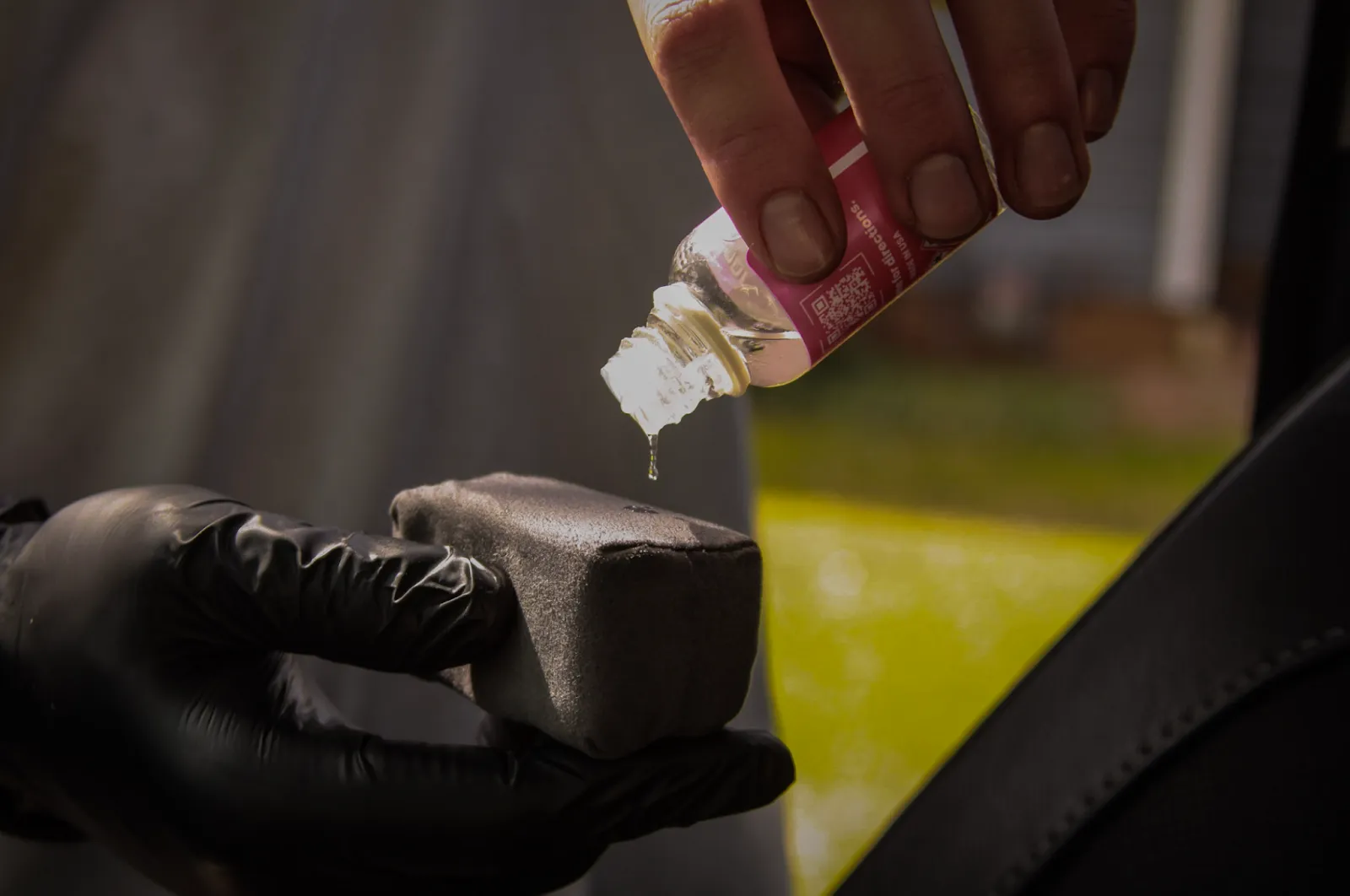
Are you looking for an easy way to maintain and protect your car? Look no further than ceramic coating. Ceramic coating can not only help protect your car, but also will keep it looking shiny and like-new for years to come.
But, what is a ceramic coating? That is a great question, and it's one we're going to answer in full detail in this blog post, no pun intended. We'll provide everything you need to know about what a ceramic coating is, why it's important, and the benefits that come with investing in this type of protection for your car. We'll also look at what the application process looks like and how you can take care of your ceramic-coated vehicle. Let's dive in!
What Is Ceramic Coating?

If you're looking for the ultimate solution to protection, much easier maintenance, and shine for your car, look no further: ceramic coating is your answer. But what is it exactly?
In a nutshell, ceramic coating is a liquid polymer applied to the exterior of your car that forms a protective layer. It's designed to shield from minor scratches and make it easier to wash dirt or other debris off the paint. This layer also helps retain the vehicle's original color and luster longer than not using ceramic coating.
Simply put, ceramic coating is like the super-tough outer shell of a nut: it protects against any damage that would otherwise cause damage to the paint job on your car. And speaking of protection, it also provides protection against chemical elements like acid rain or bird droppings that could potentially damage your vehicle's exterior. With regular maintenance, your vehicle's exterior can look just as shiny and beautiful as when you first bought it!
Why Does My Car Need a Ceramic Coating?

If you care about protecting the value of your car and extending its lifespan, then a ceramic coating is definitely something you should consider. Ceramic coatings are an extra layer of protection for your car paint, shield it from scratches, UV light, and even bacteria and extreme temperatures. Plus, it can make your car much easier to clean in the long run—keeping it looking great no matter how much time has passed!
So why exactly do you need a ceramic coating? To put it simply, coating your car with a ceramic layer creates an ultra-durable layer that helps protect against everyday wear and tear. It also makes dirt, dust, and water less likely to stick to your vehicle's surface, meaning that mud and other residue will be more easily washed away. The hydrophobic properties of a ceramic coating make it especially helpful in wet weather conditions, as water droplets will actually be repelled when they come into contact with the surface. Finally, many people believe that ceramic coatings can also help prevent fading or discoloration over time due to sun exposure.
In short, a ceramic coating is an effective way to extend the life of your vehicle and keep it looking showroom-new for years to come.
Advantages and Disadvantages of Using a Ceramic Coating on Your Car
If you're thinking about getting a ceramic coating for your car, you probably want to know its advantages and disadvantages. Ultimately, you have to decide if the benefits outweigh any potential downsides. Let's go over that now.
Advantages
The most obvious advantage of getting a ceramic coating for your car is that it provides unmatched protection against dirt, dust, and other substances that can damage the paint job on your car. It’s also very easy to clean—all it takes is a quick washing session with soap and water! In addition, a ceramic coating helps protect the car from scratch marks, oxidation, and UV rays. And because of its slickness, it even helps reduce drag while driving.
Disadvantages
The primary downside of getting a ceramic coating for your car is the cost—on average, they can cost anywhere from $500-$800 depending on who you go through and how much detail you want done. It's also time consuming--a typical ceramic coating job can take up to 8 hours or more! Another downside is that this coating won’t last forever—you should expect to redo it ever so often (usually every 1-5 years).
Types of Ceramic Coatings Available

When it comes to ceramic coatings, there are three main types available. Let's take a look at what makes each type different.
Ceramic Paint Coating
Ceramic paint coating is the most popular kind of ceramic coating. It's super durable, resistant to chips and abrasion, and can last anywhere from one to five years (depending on care). It also has excellent UV protection, so your car's color won't fade over time. Plus, it makes the car easier to wash—a simple rinse with water keeps it looking great!
Glass Coating
Glass coating is another popular option for car ceramic coatings. This type creates a super thin film that penetrates the paintwork and offers superior protection from scratches and dirt. Not only that, but glass coating also gives your car an amazing shine—think of it like a long-lasting wax job! Glass coatings typically last between two to four years depending on care.
Interior Coating

Finally, the entire interior of your car can be protected with some sort of coating. Leather seats, plastic trim, carpets & mats, the center console/radio, and pretty much anything else on the inside of your vehicle can be coated. These coatings will keep the interior of your car looking shiny and protected from harmful UV rays that could cause cracking and/or discoloration.
Application Process for Ceramic Coating Your Car
Putting a ceramic coating on your car is a simple process if done correctly. It involves three easy steps: cleaning the surface, applying the coating, and curing the coating.
Cleaning the Surface
The first step is to clean the surface of your car so that the coating can adhere properly. Any waxes or dirt should be removed so that it’s nice and clean. This usually also includes performing any paint work to remove scratches and blemishes prior to coating.

Applying The Coating
The second step is to apply the ceramic coating. It’s important to follow instructions—for example, allowing for a “flash time” for the product to bond with the surface before you wipe it off—and not to apply too much product at once. All coatings are different and require different applications.
Curing The Coating
The third and last step is to cure the coating. This usually involves letting your car sit in or out of direct sunlight for several hours after the application of the product. This allows it to fully harden and give you maximum protection from UV damage, water spots and other contaminants.
Maintenance Tips for Your Ceramic Coating
Properly maintaining your vehicle's ceramic coating is key to prolonging its life and keeping your car looking pristine. Here are a few maintenance tips you should keep in mind:
Regular Washing
A good-quality microfiber wash mitt and two-bucket method are recommended to maintain a ceramic coating. Be sure not to use harsh chemicals or heavy-duty abrasives like steel wool, as they can damage the protective layer of the coating.
Avoid High Pressure
High-pressure washing can strip away the ceramic coating and make it less effective. If you need to pressure wash, make sure it’s at a low setting and keep it at least 8 – 10 inches away from the paint.

Waxing is a No-No!
Waxing isn't necessary for ceramic coatings—it can actually damage them over time. Instead, use an approved ceramic coating boost product specially designed for cars with ceramic coatings to reinforce the strength of the coating without removing it.
It's also important to clean off bird droppings or other contaminants as soon as possible, as they can corrode the ceramic coating if left untreated for too long. Keeping these maintenance tips in mind will help you get the most out of your ceramic coating and keep your car looking great for longer!
Conclusion
A ceramic coating can make your car look brand new, but it also provides the added bonus of protection against environmental hazards that can damage your car’s paint job. It’s ideal for both the long-term and short-term, as it can last for up to three years and is cheaper than getting a wax job every few months.
Ceramic coatings are becoming more popular, and there are several different types to choose from. Be sure to do your research and find the one that best meets your needs. Professional help may be needed to properly apply it, but with the right product and technique, you can give your car the protection it needs.

About The Author





